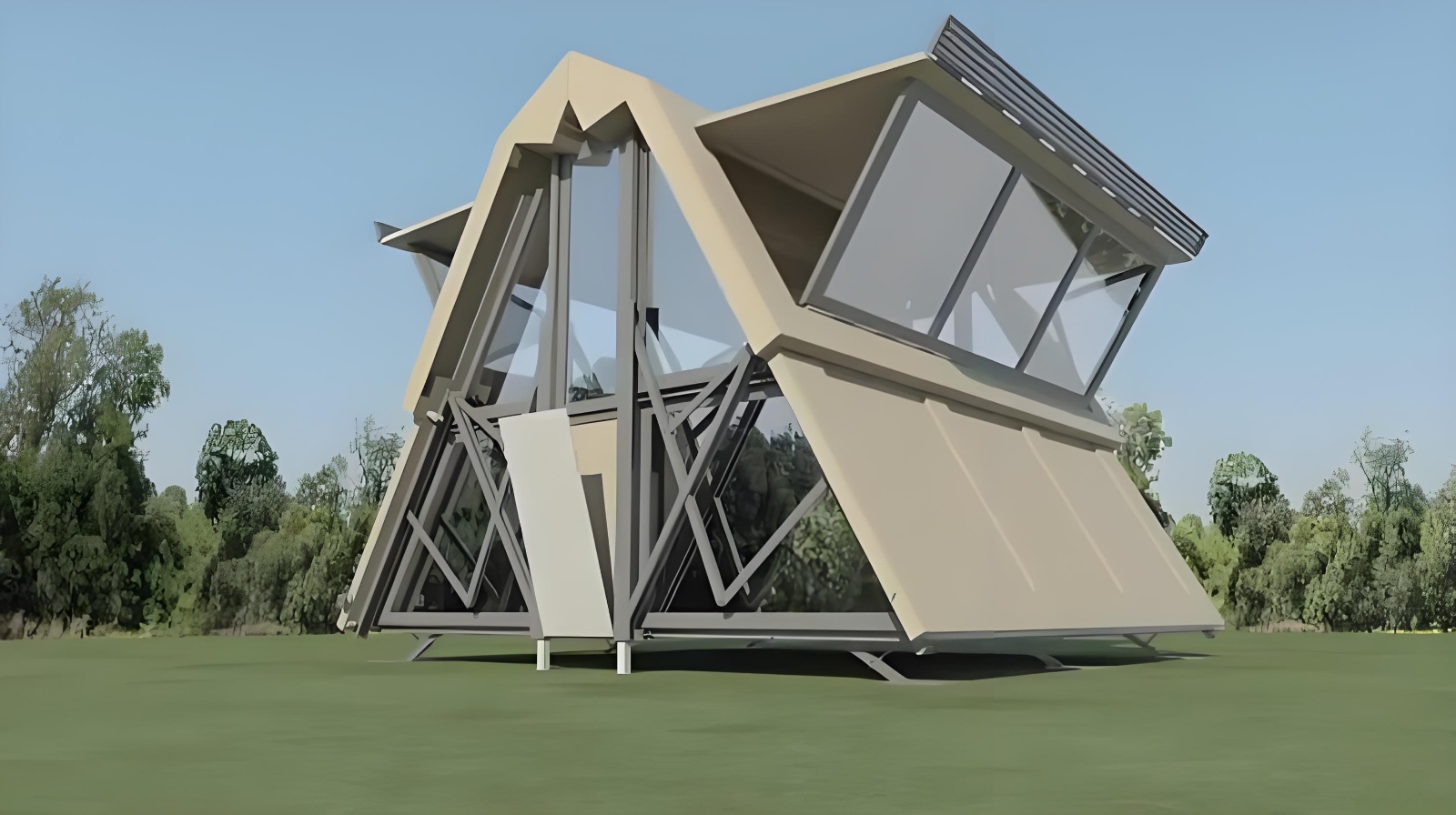
Optimisation of the shape of a folding mesh-shell house for wind-resistant design
I. Features and advantages of folding mesh shell house
Folding mesh shell house is a kind of collapsible structure built by high strength material, which has the following significant features and advantages:
Flexibility and mobility
Folding mesh shell house can be quickly unfolded when needed to provide temporary or emergency living space. Its mobility allows it to adapt to different sites and needs, providing a convenient solution for a variety of occasions.
Efficient Space Utilisation
The design of the mesh shell structure maximises the use of space within the house while maintaining structural stability and strength. This efficient use of space is especially important for limited space and resources.
Innovative and aesthetically pleasing
The unique shape and design concept of the folding mesh house gives it a strong innovative and aesthetic character. Its unique geometric shape and lines can become a bright landscape in the cityscape.
Second, the importance of wind-resistant design
Wind is a powerful force in nature, and wind load is an important design consideration for buildings. In the design of folding mesh shell houses, wind-resistant design is especially critical for the following reasons:
Structural stability
Strong winds may lead to instability or even destruction of the house structure. Therefore, a reasonable wind-resistant design can ensure that the folding mesh shell house remains stable under various wind conditions, providing a safe living environment for the occupants.
Service life
A good wind-resistant design can reduce the damage caused by wind and extend the service life of the house. This is especially important for folding mesh houses that are used for a long time or moved frequently.
Comfort
Strong winds may cause vibration and noise in the house, affecting the comfort of the occupants. Through wind-resistant design, the impact of wind on the house can be reduced and the quality of life of the occupants can be improved.

III. Strategies for shape optimisation
In order to improve the wind-resistant performance of folded mesh shell houses, we can start from the optimisation of the shape, and the following are some feasible strategies:
Streamlined design
Adopting a streamlined shape can reduce the wind resistance and lower the force of wind on the house. Streamlined design not only improves wind resistance, but also increases the aesthetics of the house.
Increase surface roughness
Adding appropriate roughness to the surface of the house can change the flow characteristics of the wind and reduce the suction and pressure of the wind. For example, textures or bumps can be placed on the surface of the house to increase the surface roughness.
Optimise structural layout
A reasonable structural layout can improve the overall stability and wind resistance of the house. For example, the shape and size of the mesh shell can be adjusted to make the force on the house under wind load more uniform.
Adoption of windproof materials
The wind resistance of a house can be improved by selecting materials with good wind protection properties. For example, high-strength fibre materials or composite materials can be used, which have high strength and toughness and can resist the impact of strong winds.
IV. Case Study
In order to better understand the role of shape optimisation in wind-resistant design, we can refer to some actual cases. For example, a folding mesh-shell house project adopts a streamlined form design and high-strength composite materials, and shows excellent wind resistance performance in a strong wind area. The house has maintained its structural integrity and stability after being hit by many strong winds, providing a safe and reliable living environment for the occupants.

V. Future Prospects
With the continuous progress of science and technology and people's increasing demand for building safety and aesthetics, the optimisation of the shape of wind-resistant folded mesh shell houses will become an important direction for future building development. Through continuous innovation and optimisation, we can create a safer, more beautiful and comfortable future residence, bringing more convenience and surprise to people's life.
In conclusion, the shape optimisation of folded mesh shell house with wind-resistant design is a research topic of great significance. Through a reasonable shape optimisation strategy, the wind-resistant performance of folding mesh shell houses can be improved to provide a safe and reliable living environment for the occupants. At the same time, shape optimisation can also increase the aesthetics and innovativeness of the house, adding new highlights to the urban landscape. In the future, we look forward to seeing more excellent folding mesh house designs, which will make a greater contribution to the development of the construction industry.
